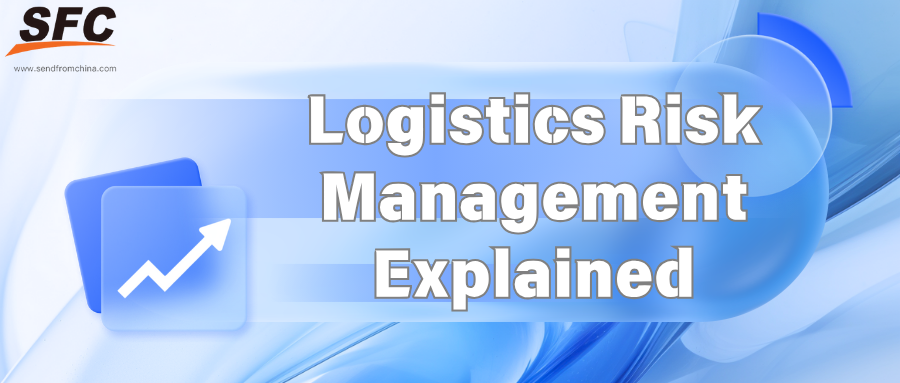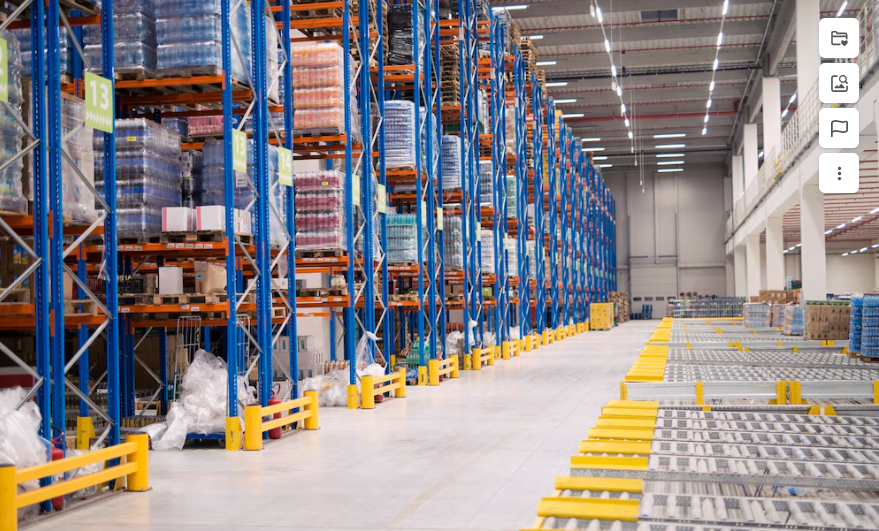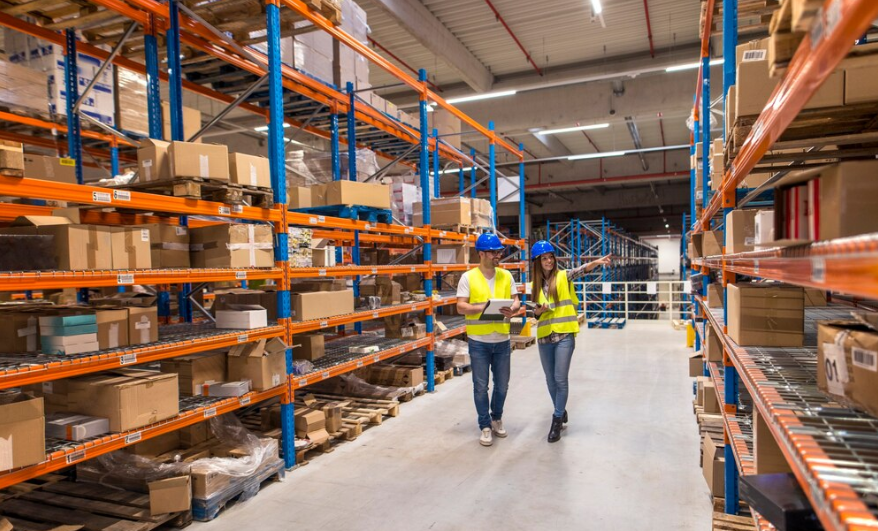Table of Contents
Get Custom eCommerce Fulfillment Service
Book a Meeting
Logistics Risk Management Explained: Types, Benefits & Practical Tips
Time: Oct 31,2025 Author: SFC Source: www.sendfromchina.com
In an era marked by global supply-chain shocks, soaring customer expectations, and the accelerating pace of e-commerce, logistics has evolved from a mere support function into a pivotal business driver. For companies navigating cross-border trade—especially sourcing from China and serving global markets—the margin for error is razor thin. At SendFromChina, we believe that mastering logistics risk management isn’t just a smart move—it’s the difference between thriving and merely surviving.

Today:
Disruption is the default. Firms report hundreds of billions in losses due to chain breaks—according to one study, supply-chain disruptions cost businesses about US $184 billion annually.
Visibility is still poor: more than half of companies admit they have little insight into risks affecting carriers or freight-forwarders within their logistics chain.
Technologies once considered optional—IoT, real-time dashboards, predictive analytics—are now foundational to risk mitigation.
What that tells us is simple: if you only view logistics as “shipping boxes from A to B,” you’re exposing your brand to downtime, cost overruns and reputational damage. But if you treat logistics as a strategic asset—one whose risks you anticipate and mitigate—you gain agility, reliability and customer trust.
In the pages that follow, we’ll walk you through everything you need to know about logistics risk management: what it is, what kinds of risks you’ll face, why you should care, how you mitigate them, and how SendFromChina supports e-commerce brands to build resilience and scale. Let’s get started.
1. What is logistics risk management?
At its core, logistics risk management is about identifying, assessing, and mitigating the threats that could interrupt the flow of goods, services or information across your supply-chain and order fulfilment operations. According to one definition, “Logistics risk management is the process of identifying and mitigating possible issues that could disrupt the flow of goods in your supply chain.”
To unpack that:
Identify means recognising points of vulnerability – from carrier delays to customs holdups to system outages.
Assess means evaluating how likely those risks are, and how severe their impact could be.
Mitigate means developing plans and controls to reduce risk or its effect. As one article puts it, “Effective risk management strategies combine prevention, preparation, and response.”
Why treat logistics as a distinct domain? Because while it overlaps with supply-chain risk management (SCRM) broadly, logistics focuses on the physical movement, storage, handling, fulfilment and transportation of goods. For example:
Transportation delays, lost cargo, port congestion.
Warehousing risks: mis-picks, damage, theft.
Compliance, cross-border regulations, documentation errors.
2. Types of logistics risk management
To manage risks you first need to know what kind they are. There are many ways to categorise them. Below is a breakdown that is helpful for logistics operations.

Major risk categories
According to multiple sources, risks in logistics/supply chains can be grouped into:
Operational risks (day-to-day failures in process, equipment, human error)
Environmental risks (natural disasters, weather, climate-related delays)
Security risks (theft, piracy, cyber-attack on logistics systems)
Strategic or external risks (geopolitical events, regulatory changes, trade disputes)
Financial/market risks (fuel costs, currency fluctuations, demand shocks)
Logistics-specific types
If we zoom in further to logistic operations themselves, we can treat risks by function:
Strategic risk management: e.g., over-relying on one warehouse, one transport route, wrong fulfillment strategy.
Warehousing & inventory risk management: e.g., stockouts, excess inventory (obsolescence), warehouse damage, mis-picks.
Transportation & carrier risk management: e.g., carrier insolvency, shipping delays, strike, route disruption, cost escalation.
Compliance and regulatory risk management: in cross-border logistics you must manage documentation, customs, tariffs, import/export rules.
Why categorising helps
Categorising risks is not academic – it helps you design tailored controls and allocate resources where the risk exposure is highest. For example:
If your major flow is sea-freight from China to USA/EU then shipping-delay, port-congestion, and carrier-risk may dominate.
If you operate fulfilment in multiple warehouses then inventory and warehousing risks might take priority.
If you are shipping hazardous or regulated goods, compliance and security risks jump.
By mapping out types of risks you can build an internal framework to assess “what can go wrong”, “how bad is it”, and “what can we do about it”.
3. Benefits of logistics risk management
It’s one thing to say “we’ll manage risk” — but why actually invest time, money and energy into logistics-risk management? Here are the key benefits.

Business continuity and reliability
When you proactively manage logistics risk you reduce the likelihood of major disruptions. For example, you are less vulnerable when a port closes, a carrier fails, or weather delays occur. One source notes, “Risk management allows companies to respond swiftly and maintain service.”
For e-commerce in particular, delivery reliability is critical — a single major delay can damage customer trust, impact repeat purchases and create reputational damage.
Cost control and efficiency
Disruptions cost money. Freight surcharges, expedited shipments, lost sales, inventory write-offs, wasted labour — these all hit the bottom line. According to IBM’s article on supply chain risk, “Identifying and addressing potential problems early can help avoid negative publicity, thereby protecting the company’s brand image and its relationships with stakeholders.”
Also, risk-aware companies can shift from reactive firefighting (which is costly) to structured planning (which is far cheaper in aggregate).
Improved customer satisfaction and market position
Reliable fulfilment is a competitive differentiator. When you reduce logistics disruptions, you deliver consistently on promised lead times and quality. That improves your reputation and gives you a competitive edge. According to a blog on logistics risk, “Timely and accurate deliveries are the cornerstone of customer satisfaction.”
Enhanced strategic agility
In volatile markets (think pandemics, port closures, rapid changes in consumer demand) having a risk-aware logistics model means you can adjust more quickly. You’re not constantly reacting, you’re planning for contingencies. This kind of agility becomes a strategic asset.
Compliance, reputation and sustainability
In global logistics you also carry risk around regulatory compliance, ethical sourcing, labour laws, environmental impact. A strong risk-management regime helps you stay ahead of these requirements and protect your brand. IBM again, “SCRM also helps companies comply with regulations, protect their brand reputation and foster sustainability.”
4. How to mitigate logistics risk
Having identified what logistics risk is and why it matters, the next step is: what do you actually do? Here are best-practice steps and actionable tips you can apply.

Risk assessment & mapping
Before mitigation, start by mapping your logistics flows and identifying weak spots. Good practices include:
Mapping your end-to-end logistics chain: raw material to factory (if applicable), factory to warehouse, warehouse to fulfilment, fulfilment to customer.
Identifying critical nodes and dependencies: e.g., a single carrier, single warehouse, single packing facility.
Using qualitative and quantitative analysis: assess probability of disruption vs impact of disruption.
Categorising risk types and ranking them by severity. For example, one source suggests the four main types: political, economic, environmental and ethical.
Diversification & redundancy
A key mitigation strategy is not putting all your eggs in one basket. For logistics this can mean:
Multiple carrier options: don’t rely on only one ocean-carrier or one freight forwarder.
Alternate routes and modes: e.g., sea + air-freight backup, rail corridors, inland options.
Multiple fulfilment/warehouse locations: reduce risk of single facility disruption. For example, one article notes that moving near-shore can reduce risk from distant disruptions.
Safety stock or buffer inventory: moving from “just in time” to “just in case” where appropriate.
Improve visibility and transparency
Visibility is a major enabler of risk mitigation:
Use tracking systems, IoT sensors, real-time dashboards so you know where goods are, what route they’re on, which leg is delayed.
Establish vendor/supplier performance dashboards: monitor carrier reliability, warehouse throughput, lead-time variability.
Communication: keep stakeholders (suppliers, carriers, customers) informed when delays or issues happen, so you can manage expectations.
Strengthen contracts, partnerships & compliance
Use contracts that include service-level agreements (SLAs) with carriers and logistics partners, including penalties for non-performance.
Conduct regular audits of key partners for compliance, financial stability, operational reliability. For example, “Conduct post-entry audits to uncover hidden supply-chain risks.”
Ensure you understand customs, trade regulations, duties, especially when shipping internationally. Risk of non-compliance or regulatory change can be significant.
Adoption of technology & advanced analytics
Modern logistics risk management benefits strongly from tech:
Predictive analytics and scenario-modelling: e.g., stress-testing your logistics flows for major disruptions.
Automation and IoT: reduce human-error in warehousing, picking, packing.
Blockchain, visibility platforms: track shipments, verify provenance, secure data flows.
Develop contingency plans & response readiness
No matter how good you are, disruptions still happen. So:
Create fallback plans: for each major risk scenario identify what you’ll do (“if port-A closes, route via port-B”; “if carrier fails, use carrier-X”).
Test these plans: run drills, tabletop exercises, scenario-planning.
Decide roles and responsibilities ahead of time: who in your organisation takes charge when disruptions occur?
Evaluate your “time to recover” or “time to survive” metrics (TTR/TTS) — how long can you operate under disruption, and how fast can you recover.
Continuous monitoring and improvement
Risk management is not a one-time project. It is ongoing:
Monitor KPIs and risk-indicators regularly: e.g., on-time delivery rates, number of claim incidents, carrier reliability, warehousing error rates.
Reassess your risk landscape: new technology, new trade routes, new regulations change the situation. One article advises, “Consistently monitor risk… many organisations assume they’re secure once they’ve implemented a mitigation framework, but the work doesn’t stop there.”
Learn from incidents: when something goes wrong, treat it as a post-mortem exercise and update your playbooks accordingly.
Putting it all together: a sample flow
If we imagine SFC (SendFromChina) working with an e-commerce brand, the mitigation flow could look like:
Map shipping route: China factory → consolidation warehouse → sea freight → destination port → inland trucking → fulfilment center.
Identify high-risk nodes: e.g., port congestion at destination, carrier reliability, warehouse damage, customs delay.
Score each risk for likelihood and impact.
Mitigate: offer alternate ports, add buffer inventory, use dual-carriers, monitor realtime tracking, contract SLAs.
Set trigger-points: e.g., if shipping time > X days then switch to air-freight; if container delay > Y days then reroute.
Review monthly and after any incident; update accordingly.
5. How SFC helps ecommerce brands manage logistics risks
At SendFromChina, based in China and specialising in third-party logistics (3PL) for e-commerce brands, we know how fragile fulfilment chains can be. Here’s how we partner with you to reduce logistics risks and deliver confidence.
Multi-modal shipping & route flexibility
We maintain a flexible network — leveraging sea-freight, air-freight, road and express services — so we’re not overly dependent on one mode or one carrier. This helps mitigate transportation risks (carrier delays, port congestion) for you. For example, if your sea shipment is delayed we can switch to air freight or use alternate ports.
Consolidated warehousing and inventory strategies
We offer warehousing and inventory-buffer options: by storing stock in China with us before shipping, you reduce lead-times and have flexibility to respond to demand spikes or sudden supply-chain hiccups. This addresses warehousing/inventory risks (e.g. stock-outs, demand surges) for your brand.
Real-time tracking, transparent dashboards
Our logistics management system gives you visibility into your shipments: from consolidation, packing, shipping to delivery. With real-time tracking you’re alerted early to delays or deviations, which gives you time to act rather than be surprised. As highlighted earlier, visibility is a key enabler of risk mitigation.
Compliance support and documentation handling
Shipping internationally from China involves customs, trade compliance, correct HS codes, duties and documentation. SFC provides dedicated support to ensure your shipments meet the required regulations, reducing regulatory/compliance risk (and associated cost or delay).
Supplier and carrier network vetting
We’ve built strong relationships with carriers, freight forwarders, customs brokers and local warehouses. This network means we can vet partners for reliability, service-level standards and adjust quickly if one partner under-performs. That covers the “diversification & redundancy” strategy discussed earlier.
Contingency planning & risk monitoring
We monitor risk indicators in the global shipping environment — such as port closures, carrier insolvencies, shipping cost spikes, geo-political disruptions — and update our clients proactively. When you partner with us you get the benefit of our logistics-risk radar.
Tailored solutions for e-commerce brands
Because we specialise in e-commerce imports/exports from China, we understand your unique fulfilment rhythm: SKU proliferation, smaller parcel shipments, high service-levels, returns and reverse logistics. We build risk-mitigation controls aligned to your business model (for example, rapid fulfilment options for high-velocity items).
6. Conclusion
Logistics risk management is no longer simply a supporting function—it is a strategic imperative. For e-commerce brands, especially those shipping from China into global markets, the stakes are high: delivery delays, damaged goods, customs fines, lost revenue and tarnished reputation can all result from unmanaged logistics risk. By understanding what logistics risk management is, recognising the types of risk, appreciating the benefits, and applying structured mitigation tools—brands can turn logistics from a vulnerability into a strength.
7. FAQs
Q1. What is the key difference between supply-chain risk management and logistics risk management?
A: While supply-chain risk management (SCRM) covers the entire flow from raw materials through manufacture, distribution and delivery, logistics risk management focuses specifically on the movement, storage and handling of goods (transport, warehousing, fulfilment).Q2. How often should a company review its logistics risk-management plan?
A: At least annually—and ideally more often (quarterly or after any major disruption). The risk landscape evolves (new regulations, carriers, trade routes, technology), so periodic review is essential.Q3. What is one of the most overlooked logistics risks for e-commerce brands?
A: Over-reliance on a single transport mode or single warehouse/fulfilment location. This creates a single point of failure. Building redundancy and alternative routes is often overlooked.Q4. Does technology really help in mitigating logistics risk?
A: Absolutely. Real-time tracking, predictive analytics, IoT sensors, dashboards all provide visibility, early warnings, and alternative planning. The more you know early, the less costly the disruption.Q5. What role does a 3PL partner like SFC play in logistics risk management?
A: A good 3PL partner brings infrastructure, multi-modal capability, warehousing, carrier networks, compliance support and monitoring. They shift risk from you to a specialist partner, allowing you to focus on your brand and product while they handle logistics resilience. Post Views:33
Post Views:33
Copyright statement: The copyright of this article belongs to the original author. Please indicate the source for reprinting.
Previous Post
Next Post
How to Choose a Fulfillment Partner for Your Ecommerce Business
TAGS
Hot Research
Get Custom eCommerce Fulfillment Service
Book a Meeting
Get a Custom China Fulfillment Solution with FREE Storage for 30 Days
 Want to know about our services, fees or receive a custom quote?
Want to know about our services, fees or receive a custom quote?
 Please fill out the form on the right and we will get back to you within a business day.
Please fill out the form on the right and we will get back to you within a business day.
 The more information you provide, the better our initial response
will be.
The more information you provide, the better our initial response
will be.





 TAGS:
TAGS: